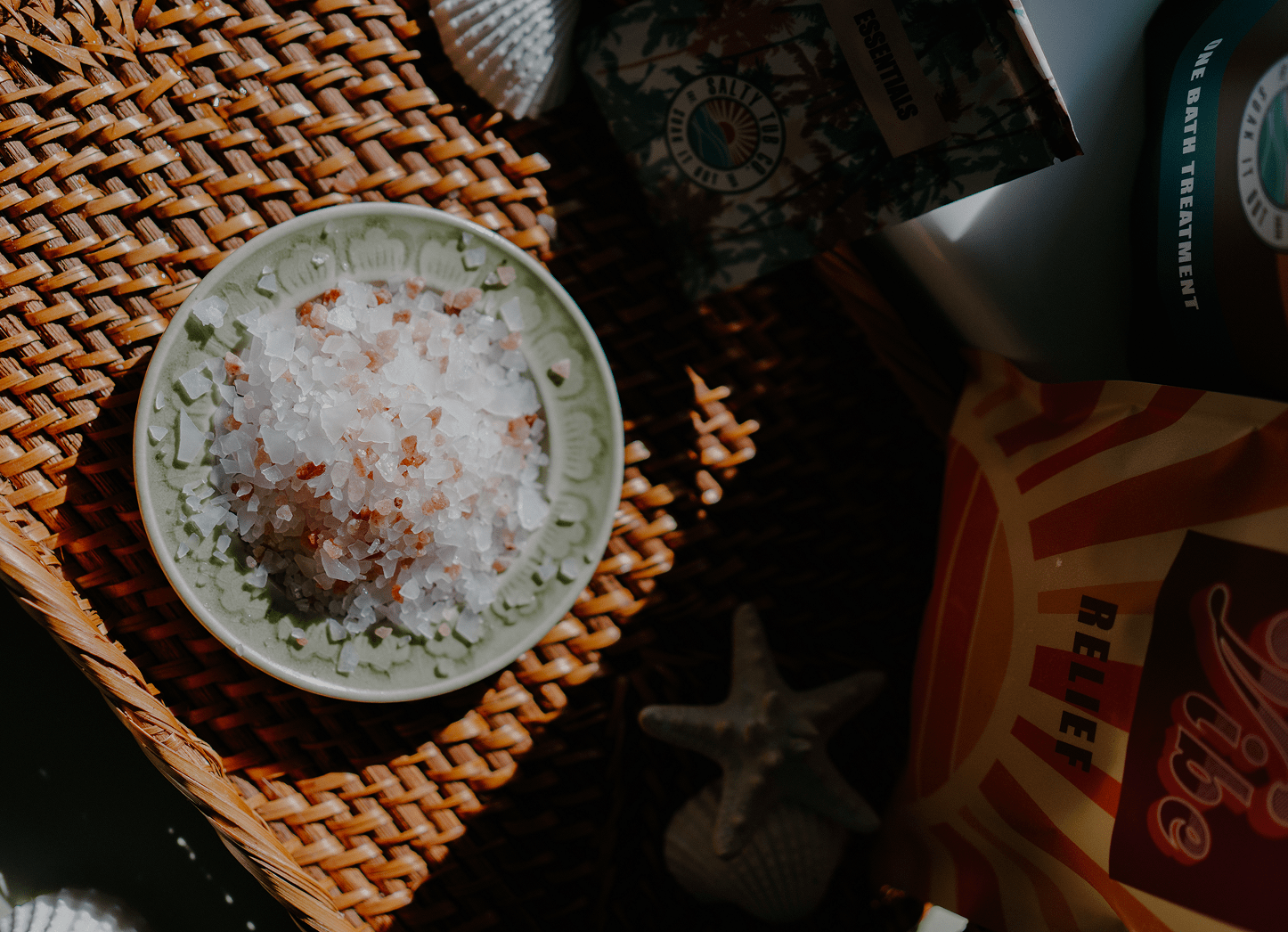
One of the best ways to unwind is with a salt bath—but did you know that there are different types of salt you can add to the tub, with different benefits? At Salty Tub Co, our bath kits feature both magnesium chloride flakes (Epsom salt) and Himalayan pink salt. Both of these ingredients can help you relax and de-stress, but they also serve separate purposes. Let’s take a look at the differences between Epsom salt vs Himalayan salt, how they work in the bath, and which one you should add to your next soak.
What is Epsom Salt?
Epsom salt isn’t actually salt—it’s a form of magnesium. This compound was initially discovered in the early 17th century in the town of Epsom, England, as it bubbled up from the ground into a natural spring where locals would bathe. After 400+ years, an Epsom salt bath is still just as refreshing.
Usually, when people talk about “bath salts,” they’re talking about Epsom salt or magnesium sulfate. At Salty Tub Co, we use magnesium chloride flakes in our bath kits, which is a different form of Epsom salt that’s easier for the body to absorb.
What Is Himalayan Salt?
Himalayan salt is a type of rock salt mined in the mountains of Pakistan. It’s commonly used as an additive in cooking, but it also has several healing properties, which is why we love a Himalayan salt bath.
Like table salt, Himalayan salt is mainly comprised of sodium chloride, but it’s less refined, more natural, and contains beneficial trace minerals, such as iron oxide. Iron oxide is the same compound that creates rust, which is why pink Himalayan salt has such a unique hue. If you’ve ever seen a pink salt lamp, a wellness salt cave, or pink salt in a salt shaker, it was most likely Himalayan salt.
Epsom Salt vs Himalayan Salt: Key Differences
Now that you know the basics, let’s talk about the key differences between Epsom salt vs Himalayan salt.
-
Composition
Epsom salt is a form of magnesium, while Himalayan salt is a type of sodium chloride that also contains other trace elements, including potassium, zinc, calcium, and iron.
-
Benefits
Magnesium, the key mineral in Epsom salt, is known for its ability to ease pain and muscle soreness. Salt, on the other hand, has anti-inflammatory properties.
-
Uses
Himalayan salt is used in cooking, but it can also be used to improve circulation, soothe skin conditions, and balance your skin’s pH in a Himalayan salt bath. Epsom salt can be used for constipation or in household cleaning, but its main use is soothing soreness in an Epsom salt bath.
Can You Use Both in the Same Bath?
Yes, you can use both Epsom and Himalayan salt in the bath at the same time. In fact, our proprietary salt blend includes both of these key ingredients. When combined, an Epsom salt bath and a Himalayan salt bath create a relaxing environment with twice the benefits, such as:
-
Eased tension
-
Lower stress levels
-
Cleared brain fog
-
Better sleep
-
Glowing, healthy skin
Choosing the Right Salt for Your Needs
If you’re deciding between Epsom salt vs Himalayan salt for your next bath, the choice really depends on your specific needs.
-
Sore Muscles
If you’ve been sitting at a desk for too long or working hard at the gym, an Epsom salt bath can help relieve sore muscles and promote physical recovery. The magnesium in Epsom salt lowers stress, releases tension, and opens your pores.
-
Irritated Skin
For dry, irritated, or sensitive skin: take a Himalayan salt bath. Himalayan salt is naturally anti-inflammatory and can help repair your skin barrier, balance pH, and soothe irritations caused by psoriasis, eczema, and stubborn acne.
-
Full-Body Relaxation
For full-body relaxation or a detox soak, try using both Epsom and Himalayan salt in your next bath. The Himalayan salt will increase circulation, while the magnesium helps remove toxins through your skin. As both of these minerals work together, you’ll feel totally refreshed.
Elevate Your Bath Ritual with the Right Mineral Salt
Whether you’re using Epsom salt vs Himalayan salt in your next bath, both of these minerals are extremely beneficial. Try one of our bath kits today to experience the difference for yourself.